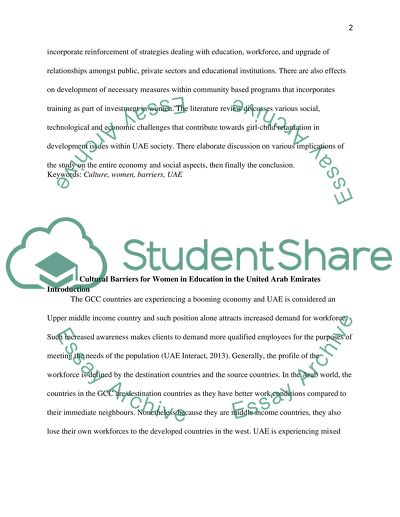Cite this document
(“Cultural Barriers for Women in Education in the United Arab Emirates Research Paper”, n.d.)
Retrieved from https://studentshare.org/education/1684156-cultural-barriers-for-women-in-education-in-the-united-arab-emirates
Retrieved from https://studentshare.org/education/1684156-cultural-barriers-for-women-in-education-in-the-united-arab-emirates
(Cultural Barriers for Women in Education in the United Arab Emirates Research Paper)
https://studentshare.org/education/1684156-cultural-barriers-for-women-in-education-in-the-united-arab-emirates.
https://studentshare.org/education/1684156-cultural-barriers-for-women-in-education-in-the-united-arab-emirates.
“Cultural Barriers for Women in Education in the United Arab Emirates Research Paper”, n.d. https://studentshare.org/education/1684156-cultural-barriers-for-women-in-education-in-the-united-arab-emirates.


